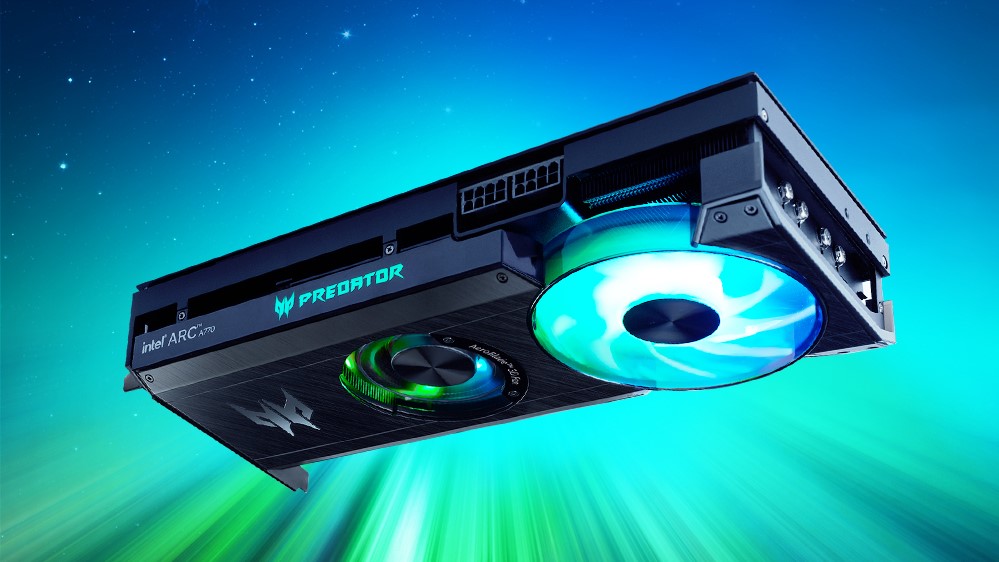Intel Arc A770 GPU has a new driver – and it’s good and bad news
Some impressive performance boosts are in evidence, but other upticks are much more modest

Intel has released a new graphics driver for its Arc A770 and A750 GPUs, complete with some useful bug fixes, and more importantly a bunch of performance improvements for some games – though some of the frame rate upticks are more modest, admittedly.
As Tom’s Hardware reports, driver version 31.0.101.3802 – and note this is still a beta – delivers up to an 8% performance boost for the flagship A770. That particular improvement comes for Dirt 5 at 1440p resolution with ‘ultra-high’ settings.
Another sizeable boost is delivered with Ghostwire Tokyo, which can run up to 7% faster, again at 1440p (with ‘cinematic’ settings). Furthermore, Gotham Nights runs up to 5% swifter at 1080p resolution with the highest preset settings.
There are a number of other games that get frame rate boosts, but all are more modest to the tune of 3%. That includes Chorus (1440p, ‘epic’ settings), Far Cry 6 (1080p and 1440p ‘ultra’), Forza Horizon 5 (1080p ‘extreme’, 1440p ‘high’), Guardians of the Galaxy (1080p ‘ultra’, 1440p ‘high’), and finally Sniper Elite 5 (1080p ‘ultra’).
The fresh driver also introduces support for four new games, namely Call of Duty: Warzone 2.0, Dysterra, Marvel’s Spiderman: Miles Morales and Sonic Frontiers.
Intel also applied a raft of bug fixes here, including the solution for a problem that caused stuttering in Overwatch 2 with the A770 and A750 graphics cards, and game-crashing issues with Battlefield 2042 (that happened when entering a match) plus Marvel’s Spider-Man Remastered (a ray-traced reflection bug that could trigger a hard crash).
Analysis: Heading in the right direction
Despite the numerous fixes here – which are obviously welcome – bear in mind this is still a beta release, so the graphics driver could potentially bring some baggage of its own, bug-wise.
Get daily insight, inspiration and deals in your inbox
Sign up for breaking news, reviews, opinion, top tech deals, and more.
Clearly, though, it’s good to see Intel working to push forward with not just cleaning up glitches, but actually fine-tuning performance. Some of the gains of up to around 7% to 8% here are well worth having, even if the caveat is that they are ‘up to’ – and in the case of the lower percentages, you may not realistically notice much (or any) difference.
Still, we’re definitely not going to complain, because if Intel is notching up frame rates steadily across various games with each driver release, eventually we’re going to be moving closer to the place we want to be with Arc graphics cards – delivering smoother and more stable performance.
Once that begins to be demonstrable, maybe Intel can look at making itself a serious value proposition compared to what’s happening with AMD and Nvidia right now (which are only ushering out expensive high-end graphics cards for the next-gen, or at least that’s all we’ve seen thus far).
Darren is a freelancer writing news and features for TechRadar (and occasionally T3) across a broad range of computing topics including CPUs, GPUs, various other hardware, VPNs, antivirus and more. He has written about tech for the best part of three decades, and writes books in his spare time (his debut novel - 'I Know What You Did Last Supper' - was published by Hachette UK in 2013).